Showing 51–60 of 142 results
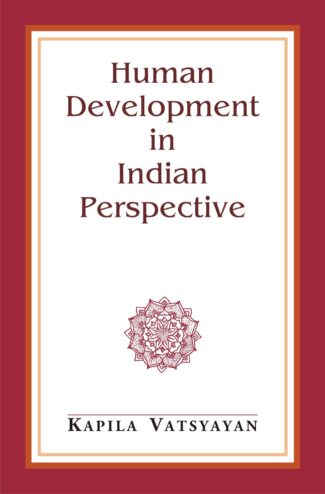
This book, a collection of six lectures Dr Kapila Vatsyayan made at different UNESCO seminars and two reports, presents, discusses, analyses and prognosticates the varied aspects of human development from the perspective of a developing country.
This book, a collection of six lectures Dr Kapila Vatsyayan made at different UNESCO seminars and two reports she prepared for UNESCO, presents, discusses, analyses and prognosticates the varied aspects of human development in India and other developing nations. She has made some commendable observations and suggestions with a futuristic view on UNDPs Human Development Report 1990 which defines and measures human development.
Through these papers and reports, Dr Vatsyayan has attempted to chart out a new perspective as far as development is concerned from the viewpoint of developing countries. The Western paradigms in defining development do not fit the frame of these countries. Culture, arts, oral wisdom, all should come to play a crucial role in defining, planning and executing developmental programmes in such countries, and in defining their educational status.
In addition, the volume provides a historical glimpse of Delhi and addresses the issues of cultural heritage and cultural lifestyle of the National Capital Territory of Delhi. In a nutshell, Dr Vatsyayan makes the readers travel with her continuous UNESCO engagement, over a period of sixty years.

With surveys of diverse Buddhic and Hindic temples in India, Sri Lanka, Indonesia, Myanmar, Thailand, Vietnam, and even Malaysia, the book shows how the basic element in their architecture: the PLAN was fraught with iconographic import and input, necessitating the guidance of authoritative compendia, the arcane knowledge of the sthapati (priest-architect), and other complex procedures steeped in symbolism.
Over the rolling centuries, Buddhism and Hinduism, two of the worlds oldest sustained faiths, came to evolve a complex, yet precisely defining, iconic language: not just for figural representations, but for the architectural plans of their temples and monuments as well a language that allows interpretations of geometric proportions. Here is the first ever effort to brilliantly unravel the iconic idiom involved in the architectural plans of Buddhist and Hindu temples and monuments of India and the Indianized States of Southeast Asia. With his indepth surveys of diverse Buddhic and Hindic temples in India, Sri Lanka, Java (Indonesia), Kambuja, Myanmar, Thailand, Vietnam, and even Malaysia, the author shows how the basic element in their architecture: the PLAN conceived within a cosmological framework was fraught with iconographic import and input, necessitating the guidance of authoritative compendia, like the Manasara and the Mayamata, the arcane knowledge of the sthapati (priest-architect), and many other complex procedures which all were steeped in symbolism. In analysing the architectural plans of these temples, Professor Bunce also highlights the various related iconographic considerations, like orientation, basic geometric forms, construction methods, rules and ratios, the non-congregational necessity, the high place as a consideration as well as the cave besides a number of viable influences which exert various amounts of control, e.g., textual, philosophic/theologic, numerological, astrological/astronomical, regionality and, most importantly, the mandala. Generously supported by visual material comprising as many as 400 figures and line-drawings, Professor Bunces book is veritably a monumental, off-beat exercise of enormous interest to iconographers as well as the historians/specialists of South and Southeast Asian temple architecture.
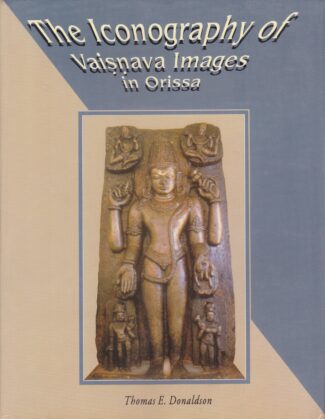
This work analyses the Vaisnava iconography of Orissa. Vaisnava iconography proper including Hari-Hara and other composite images and those of Visnus female consorts; images of Visnu in his avataras; depiction of Balarama, Krsna and Jagannatha; and iconography of the secondary figures like Garuda and Hanumana.
This work is a well?researched attempt to analyse the Vaishnava iconography of Orissa which is unique in that there are to be found an overwhelming number of Vishnu images in the region despite paucity of Vishnu temples and inscriptional evidence suggesting royal patronage. Dr. Donaldson here undertakes a detailed study under four heads: Vaishnava iconography proper including Hari?Hara and other composite images and those of Vishnus female consorts; images of Vishnu in his different avataras; depiction of Balarama, Krishna and Jagannatha; and iconography of what are termed secondary figures like Garuda and Hanumana. He presents various iconographic charts throughout the book on the basis of textual description of the many images and their representations in sculpture with a number of photographs of the images studied, he provides details on the physical attributes of each group of images and specific images and their evolving iconographic and stylistic peculiarities: such as the decline of a particular motif and the emergence of another depending on the popularity of sects. The author also traces with keen interest the influence of Vaishnavism on the iconographic programme and rituals of Shaiva temples, resulting in even joint worship of Vishnu and Shiva. For each type of iconography, the book cites examples of different Orissan temples and discusses the images in them. The book would be of immense interest to scholars of religious studies and particularly those concerned with Hindu iconography.

The book relates the diverse experiences of Mr. Tzannis Tzannetakis, a former Greek Prime Minister, in India: he witnesses centuries-old marvels, landmarks of its long religious-cultural tradition; and his response is profound and genuine.
A journey to India . . . is quite unlike a journey to any other land . . . this sentiment expresses the uniqueness of a visitors experience of India. For, among other things, India is a perpetual mystery to him from the beginning; he wades through the mystique and out of it; and he is never free of it. For Mr. Tzannis Tzannetakis, a former Prime Minister of Greece, India is this and much more. His informal experiences presented here are diverse and steeped in the historic-cultural flavour special to India. He sees its centuries-old palaces, forts of ancient maharajas, of the glorious Mughals; the unparalleled cave monuments of Ajanta-Ellora with their exquisite carvings, the breathtaking sculptural decorations and the architectural dream of Khajuraho; the grandeur of the Taj, a wonder in white marble; the exotic deserts of Jaisalmer; the heart of holy India, Banaras, with the ever-flowing Ganga; the marvel of Delhi which amalgamates the old and the new. His response is, likewise, rich with a range of tones; he not only admires the material landmarks of ancient India but breathes in the spirit of the past the old delight, the royal romance, the dignity, valour in that chivalry . . . His is not simply a discovery of India but an analysis of Indias time-tested values and its modern message in order to understand India in the real sense its unique past; the India of today, of the traditional and the modern; and the India of the future . . . its goals, aspirations. The authors tone is wonder-struck but, at the same time, genuine and realistic. He captures the essential India and not just its forms and colours to present a delightful, critical and sensitive picture.
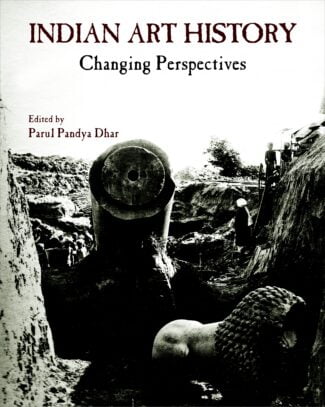
The key art historical concerns addressed in this volume include studies in form, style, textual interpretations, iconography, symbolism, representation, connoisseurship, artists, patrons, gendered readings, and the inter-relationships of art history with archaeology, visual archives, and history, in the Indian context.
The shaping of the disciplinary practice of art history in the Indian context has been a fascinating process and brings to the fore a range of viewpoints, issues, debates, and methods. Changing perspectives and approaches in academic writings on the visual arts of ancient and medieval India form the focus of this collection of insightful essays.
A critical introduction to the historiography of Indian art sets the stage for and contextualizes the different scholarly contributions on the circumstances, individuals, initiatives, and methods that have determined the course of Indian art history from colonial times to the present. The spectrum of key art historical concerns addressed in this volume include studies in form, style, textual interpretations, iconography, symbolism, representation, connoisseurship, artists, patrons, gendered readings, and the inter-relationships of art history with archaeology, visual archives, and history.
Based on the papers presented at a Seminar, Historiography of Indian Art: Emergent Methodological Concerns, organized by the National Museum Institute, New Delhi, this book is enriched by the contributions of some scholars who have played a seminal role in establishing art historys disciplinary orientations in the Indian context, and by those who offer more recent perspectives on the subject. Lucid and informative, this is an indispensable resource for all those engaged with the history and historiography of ancient and medieval Indian art in universities and museums across the globe, and will also be of interest to the general reader.
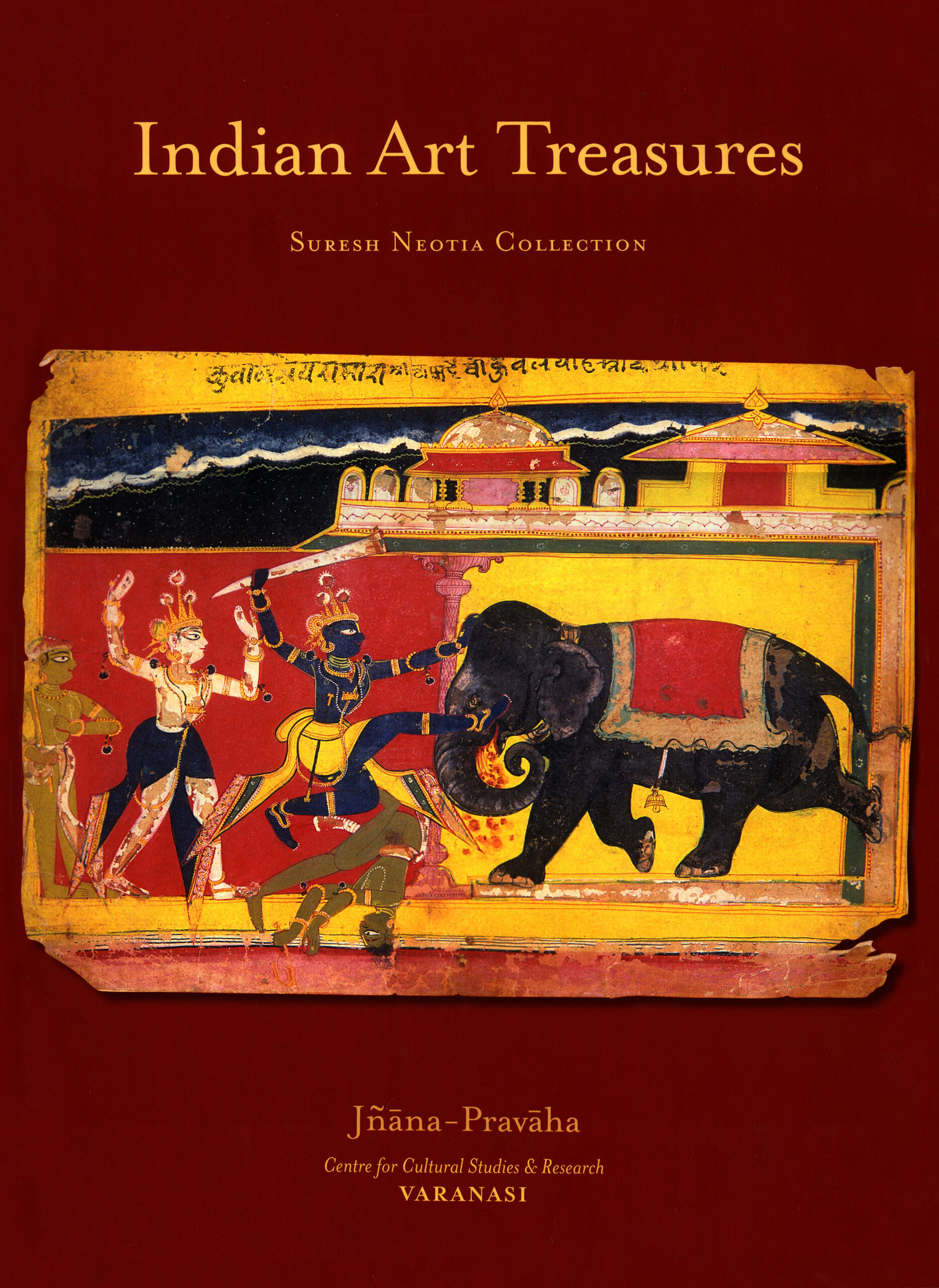
The book describes the priceless art objects collected and displayed at the Kalamandapa (the Museum) at Jnana-Pravaha, Varanasi. These objects include Indian miniature paintings, Tangkhas from Tibet and Nepal, stone sculptures and terracottas. Some of these objects have been presented for view in major national and international expositions.
Jnana-Pravaha, the Centre for Cultural Studies & Research at Varanasi represents the vision of its founders, Bimla Poddar and Suresh Neotia. It aims to serve and promote the cause of culture by rediscovering and highlighting its universal elements those that transcend all barriers. Jnana-Pravaha presents varied and scintillating forms of the visual and performing arts, and endeavours to create an awareness about the countrys cultural ethos and ethnic conventions. It is devoted to reviving and preserving old and obscure scripts which, while of immense significance for the reconstruction of the cultural history of the subcontinent, have been neglected to the point of being extinct. Through its educational and research programmes and publications, Jnana-Pravaha is engaged in the dissemination of our tangible and intangible heritage. All this is being accomplished with quiet zeal in a serene yet pleasing ambience. Situated on the left bank of the holy stream of Uttaravahini Ganga, Jnana-Pravaha faces the historical fort of Ramnagar on the other side of the river. While a well-equipped reference library on Indian culture, art, history, philosophy, literature and allied subjects caters to the needs of students and researchers, iterature and allied subjects caters to the needs of students and researchers, Kalamandapa (the Museum) presents a treasure trove of art dating from the pre-Mauryan age to the 20th century. The survey and documentation of local sites and antiquarian remains is emerging as an added attraction to art historians. Seminars, symposia and workshops on different themes form regular features of the Centres activities. In-depth studies of specific subjects are a hallmark of Jnana-Pravaha. Similarly, conducting special courses in early scripts like Brahmi and Kharoshti affirms the conviction of the Centre of the need to revitalise archaeological source material. An independent research project for deciphering and studying epigraphs and records has been launched with the appointment of Senior and Associate Fellows. Staging of Sanskrit plays is another Jnana-Pravaha annual event. The Vedas are the fountain of knowledge and are accepted as the earliest books of the world. To preserve their oriental style of learning and recitation, Jnana-Pravaha has established a city unit known as the Samskara & Anushthana Kendra. The emphasis is on the conventional and correct pronunciation of Vedic hymns. Young students undergo rigorous training in the Gurukula style under the close supervision of the Acaryas.
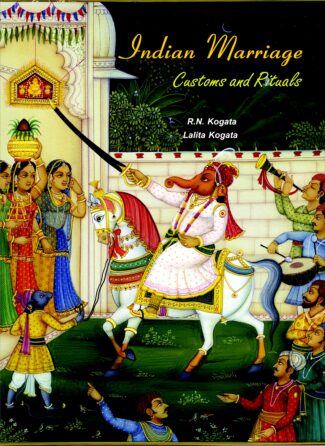
Marriage or Vivaah, particularly in India, is a sacred ceremony comprising various customs Þ religious and social Þ and Vedic rituals. These are meant to propitiate the gods for obtaining their blessings for the bride and the bridegroom, and to honour and entertain those who participate in the celebrations. This book explains in detail, all the important rituals which form part of the marriage.
Marriage is considered a very significant ritual for giving societys sanction to a close relationship between a man and a woman as husband and wife. It is, therefore, also called a social system. The marriage ceremony is a combination of many rituals, based on information contained in Hindu scriptures. It also represents and reflects the social customs and practices that are prevalent in the society. The rituals vary depending upon the community, the religion and the state where they are performed. The marriage customs, rites and rituals among royal families are mentioned in this book most of these rituals are followed by common people as well and are performed in the original or altered forms in the Indian society. Mr R.N. Kogata and Mrs Lalita Kogata did a lot of research and consulted several authorities and have written in detail about the various rituals involved in a human beings life from birth to death. Different scholars have mentioned different numbers of rituals and sacraments 25, 40 or 48. But Maharishi Veda Vyasa has described 16 rituals as important. Out of these, the Vivaah (marriage) samskaar itself encompasses various rituals the main ones covered in this book are: the Bindaulee (wedding procession); Hathalevaa (hand-taking ceremony or paanigrahan), Phere (agni pradakshinaa, circumambulation of fire); Kanyaadaan (giving away daughter in marriage); Maangbharaaye (filling vermilion); Mangalsutra (tying the wedding thread); Saptapadee (walking seven steps together); and Vadhu kee Vidaaee (brides departure to her in-laws house). This book should be in all households in order that all will know the meanings of the various rituals in a marriage particularly in the present days when learned pandits who can explain the rituals, are few, and people have no time or inclination to go through voluminous scriptures or texts on the subject of marriage.

This book extensively treats the subject of Indian temple jalas or grilles with an in-depth discussion basd on Vastusastra, for the first time with the aid of line drawings and illustrations. It brings within its purview Islamic screen and Gothic traceries also, for comparing and contrasting.
The present monograph is unique in that it, for the first time, extensively treats the subject of Indian temple jalas or grilles together with an in depth discussion in the light of relevant medieval vastusastra passages in Sanskrit on Indian architecture. Besides identification, classifica-tion, and description of the different grille types as well as their forms, features, and ornamentation, it investigates their purpose and their relationship with the environment as well as their functional engagement with the building of which each example is an integral part. It likewise traces the origins or at least the earliest incidences together with the development, wherever discernible, of the Indian grilles. While maintaining the thrust of writing towards the ancient and medieval Indian grilles, it brings within its purview the Islamic screens and the Gothic traceries for comparing and contrasting their characteristics with the earlier Indian. In the process, it also dwells on the factors of concept, form, function and, above all, aesthetics. The visual appearance of the jalas developed in each of these three architectural systems considerably varies due to environmental, creedal, cultural, and hence stylistic differences. The text of the monograph is elucidated by carefully drawn 55 line drawings and 348 photo illustrations. Being scholarly and, as a result, of academic disposition, it will not have the privilege of the company and prestige of coffee table books. It likewise cannot be a companion book for the icono-graphers who in India dominate the field of ancient art and pass as art historians, nor is it useful to the modernists and lovers exclusively of contemporary arts and literature. What is more, in orientation, treatment of theme, and the tenor of discussion, it adheres to the methodology of art history proper and, by the same token, not that of neo-art interpretatory, a different and new discipline which their protagonists, the Newtrendians in the West and because of them the Newtrendianoids in India, claim and proclaim as New art history, just as they look down at the other/original one by qualifying it as conventional, traditional, old-fashioned, and outmoded. They are largely unconcerned about history and chronology, socio-religious and cultural background, and ignore style, inherent concepts, philosophy, metaphysics, and aesthetics.

The book deals with evolution of Mughal architecture (ad 1526 to 1658) and explains the distinct characteristics of Mughal art the use of architectural material by the Mughals, their roofing techniques, their dome and the special features of the Mughal jharokha. Prof. Nath delves into the concepts and customs the Mughal architecture involved, discussing examples of monuments in detail.
It deals, extremely briefly, with the evolutionary process of Mughal Architecture, practically from Babur to Shah Jehan (1526 to 1658 ad). Instead of being an exotic phenomenon, as it is largely misunderstood, Mughal Architecture, like the Gupta art, was deeply rooted in the soil and it grew and developed not only on indigenous forms and techniques, but also on its concepts, customs and beliefs. It was owing to the decisive participation of native sources, in its development, that such a wonderful monument as the Taj Mahal could be built in India, and nowhere else. The Land, the People and the Culture have made it what it is, which is why it is so diametrically different from any other art of Islam. Written in a simple language, without the research jargon, and adequately illustrated, the book gives an authoritative appraisal of the subject with landmark examples.
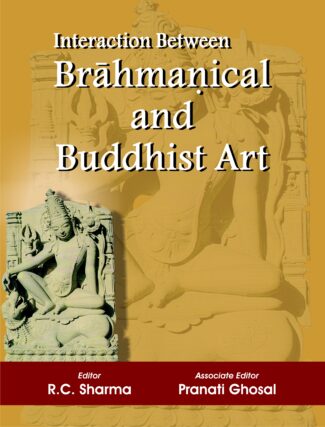
The present volume is an outcome of the expert discussion on the theories of Brahmanism and Buddhism, in an International meet at Jnana-Pravaha. Philosophical and artistic interaction between the two have been brilliantly discussed with references to famous places as well as texts to unravel basic principles.
Brahmanism and Buddhism adopted symbol and image worship almost simultaneously in the pre and early centuries of the Christian era. With the passage of time, the forms and plethora evolved and despite several distinctive features common elements between the two religions continue and fructified. The fact is revealed both at the philosophical and artistic levels. The present volume is the outcome of the well discussed theories by the experts, assembled in an International meet on the subject in the second week of February 2003 at Jnana-Pravaha, Varanasi, organized in the joint collaboration of Acharya Narendra Dev International Research Institute for Buddhist Studies, Lucknow. The book incorporates a good number of papers dealing with philosophical and artistic interaction between Brahmanism and Buddhism for more than a millennium years. The interaction was largely peaceful but there were certain phases in the Medieval period when clash also surfaced. It was most profound in the region of art and architecture, as a result of which some similarities as well as unique features between the two had emerged. All these aspects have been brilliantly discussed and specific references to famous places associated with Brahmanical and Buddhist arts in Asia as well as textual references to unravel basic iconographical principles have been adequately reflected in the present volume. The book besides being useful to scholars and students researching on ancient Indian art and architecture would appeal to general readers interested to know more about Indias glorious art traditions.
| There are no products |